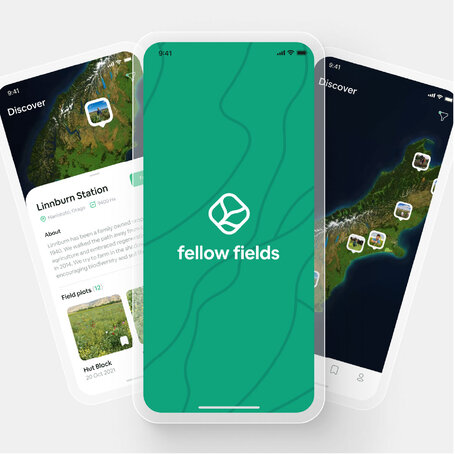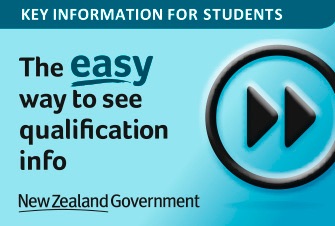What is the Graduate Diploma of Creative Technologies - Interactive Design?
This one-year programme will help you further develop your skills in Interactive Design (UX) through both project-based and solution-based learning.
Interactive Design defines how users engage with digital products, systems, and services. This discipline focuses on creating meaningful interactions through thoughtful interface design (UI) and user experience design (UX). It involves analysing and shaping the way users interact with digital environments—whether through websites, apps, or product interfaces—and can extend to physical experiences that incorporate digital components.
Interactive Design spans a variety of platforms, including desktop, mobile, and other devices. This course blends technical proficiency in industry-standard design software with creative exploration of core design principles. Students work in a studio-like environment, responding to real-world briefs with guidance from experienced lecturers who specialise in interactive and UX design.
Use the skills you've gained in the first half of the year to work on your Major Project. This is your opportunity to work on your passion project, create incredible work to bolster your design portfolio, and even enter some of New Zealand's prestigious design award competitions.

‘Fellow Fields’ by Lily Wigglesworth
Fellow Fields is an app supporting Kiwi farmers' transition to more regenerative farming practices by facilitating the sharing of knowledge, tools, and observations around regenerative agriculture systems across New Zealand. ‘Fellow Fields’ achieved an international Student Notable Service Design Award at the Core77 Design Awards 2022 and a Silver DINZ Best Award for Student Digital in 2022
Course Outline & Timetable
Our Graduate Diploma of Creative Technologies - Interactive Design (UX) starts with our standard course outlines below. During your application process you'll talk with our future student advisors and programme leaders, and we'll create a comprehensive 1-year plan around what you want to achieve through your studies.
Course Outline
Our February intake is designed for students who already have strong design skills and knowledge, and want to bring those skills to the realm of Interactive Design. You'll spend Term 1 and 2 focused on building your skills with the tools and theory around interactive design, before working on your own interactive projects in Term 3 and 4
| Component Name | Credits | Toggle |
|---|---|---|
|
Interactive Design Theory
|
||
|
Students are provided with contextual theory and knowledge of interactive design principles. Including processes relating to ideation, planning and prototyping of interactive design solutions. Theories and principles of interactive design methodologies are explored, with a focus on goal-centric, platform-agnostic and User Experience design. Students produce interactive content in the accompanying studio component, applying the relevant principles and concepts of design learned in this theory component.
|
||
|
Interactive Design Studio
|
||
|
Classes will focus on developing creative and technical solutions in response to interactive design briefs through directed and self-directed practice. This will be supported at relevant times with tests and exercises corresponding to the topics taught in the Interactive Design Theory classes in order to prepare students for formative and summative assessments via a project-based learning environment.
|
||
|
Special Topic (Minor Project)
|
||
|
This component is project-based with students opting to initiate either a self-directed Specialist Investigation for those wishing to deepen understanding in an area of special interest to them, or an Interdisciplinary Project for those wishing to broaden their knowledge of media design as a discipline. Students are required to develop a project proposal based on an independent investigation to explore, develop and realise in a studio environment.
|
||
|
Interactive Design Capstone Project: Practice-based Inquiry
|
||
|
Students undertake an independent practice-based inquiry and document a body of work. This final body of work is the culmination of the Graduate Diploma and should also represent the students’ perspective as emerging professional designers. Lecturers will act as mentors and supervisors, providing advice and feedback, as well as monitoring student progress to ensure processes are followed, milestones are met, and sufficient progress is being made.
|
||
Timetable
For our Feb intake, the course will run over 4 terms from February to November. Your study hours will be:
Semester One: 11:45pm– 2:45pm (Monday - Friday)
Semester Two: 8:30am– 11:30am (Monday - Friday)
+5 hours of directed online learning p/w
For more details about the course and to see the academic calendar, download the course handbook below.
Course Outline
Our July intake is designed to give students a more generalist understanding of Graphic, Motion, and Interactive (UX) design before bringing those skills together on an Interactive Design capstone project.
| Component Name | Credits | Toggle |
|---|---|---|
|
Interdisciplinary Design Foundation
|
||
|
Students independently implement a multi-part interdisciplinary project integrating practices across Graphic, Motion and Interactive / UX Design. Formal, technical and contextual theory is delivered to support studio practice. The project is underpinned by User experience (UX) methodologies and is carried out within tight technical and creative limitations, giving students practical experience of industry practice. Independent and reflective thinking, personal responsibility, time management and practical skills are developed using a project-based learning approach
|
||
|
Professional and Academic Practice
|
||
|
This component introduces students to the subjects of project management, interpersonal communication and scholarly investigation. Students are encouraged to examine assumptions and personal biases that effect their investigative practice. Personal communication skills, project management strategies, investigatory approaches and critical thinking methods are also introduced.
|
||
|
Creative Media Strategies
|
||
|
Students are introduced to different areas of marketing communications, the media involved, the concept of creative advertising, the creative brief and the importance of ideas and insights in enabling integrated and transmedia communication.
|
||
|
Special Topic Project
|
||
|
This component is project-based with students opting to initiate either a self-directed Specialist Investigation for those wishing to deepen understanding in an area of special interest to them, or an Interdisciplinary Project for those wishing to broaden their knowledge of media design as a discipline. Students are required to develop a project proposal based on an independent investigation to explore, develop and realise in a studio environment.
|
||
|
Interactive Design Capstone Project: Practice-based Inquiry
|
||
|
Students undertake an independent practice-based inquiry and document a body of work. This final body of work is the culmination of the Graduate Diploma and should also represent the students’ perspective as emerging professional designer. Lecturers will act as mentors and supervisors, providing advice and feedback, as well as monitoring student progress to ensure processes are followed, milestones are met and sufficient progress is being made.
|
||
Timetable
For our July intake, the course will run over 4 terms from July to June. Your study hours will be:
Semester One: 3:00pm– 6:00pm (Monday - Friday)
+5 hours of directed online learning p/w
Semester Two: 8:30am– 11:30am (Monday - Friday)
+5 hours of directed online learning p/w
For more details about the course and to see the academic calendar, download the course handbook below.
Careers & Industry
The Graduate Diploma of Creative Technologies provides you with everything you need to level up your skills, and to bring a more diverse skillset to your existing career, or the tools to switch to a new one. Our graduates have gone onto have successfull careers in industry, freelance, or even growing their existing businesses.
User experience (UX) Designer
Often responsible for transforming concepts into functional prototypes, UX Designers may also design UI elements and components to visualize and test interactions. Their work bridges the gap between user expectations and product functionality, ensuring that every touchpoint is purposeful and user-centered.
Product Designer
UI Designer
UI Designers often collaborate closely with User Experience (UX) Designers, as well as professionals in product development, engineering, and marketing. This cross-functional teamwork ensures that the final product is not only visually cohesive but also aligned with user needs and business goals
Web/App Designer (Digital Designer)
By combining visual design with user-centered design principles, Web/App Designers create layouts, navigation systems, and interactive elements that guide users seamlessly through digital environments. Their work helps ensure that products are not only aesthetically pleasing but also easy to use and aligned with user expectations.
Course Requirements
Qualifications you'll need for this course
Open to domestic and international applicants with a degree qualification, or accumulated professional / educational experience relevant to the creative technologies domain.
All applicants need to provide evidence to support the level of skill required for a self-directed investigation.
If you are applying for the GDCT after completing a Bachelors Degree you will need to provide:
- Your portfolio;
- Your letter of intent;
- Your transcripts from your Bachelors qualification;
- Your CV/Resume;
If you are applying on the basis of accumulated professional or educational experience, you will need to provide evidence of four years or more of accumulated professional or educational experience, to include:
- Your portfolio;
- Your letter of intent;
- Your CV/Resume;
- Two reference letters from previous employer/s; and
- You may also want to provide your transcripts from any prior tertiary qualifications if you completed these in the past 10 years.
Please note, quotas may apply to some programmes. Where demand exceeds the number of available places, applicants who meet entry requirements will be admitted on a first-come-first-served basis.
As an international student, you'll need to prove you have sufficient English language skills in order to complete this course. We'll be looking for Academic IELTS overall score of 6.0 (minimum) with no band less than 5.5, or equivalent test result.
We accept a range of internationally recognised English Language proficiency test. Find out more on the NZQA website or download the NZQA list HERE.
How to prepare your portfolio
If you are applying for Graduate Studies you'll already have a body of work and a portfolio. When applying, we'll expect your portfolio to be to a professional standard, clearly indicate your areas of interest, and who you are as an artist. We would also like to see your show-reel if applicable, for areas of interest such as visual effects and motion graphics.
Portfolio type - Advanced Portfolio
File Format - PDF, Website URL or JPGs
For more information about how to build your portfolio, head over to our portfolio tips page.
Before you begin your study with us, you will need to have a suitable device that has the functionality to run the programmes required for your course.
Click the link below to find course-specific requirements and recommendations, along with links to more information about hardware specifications. We have prepared these recommendations to help our students equip for flexible, blended learning.







